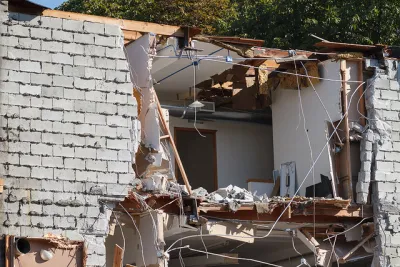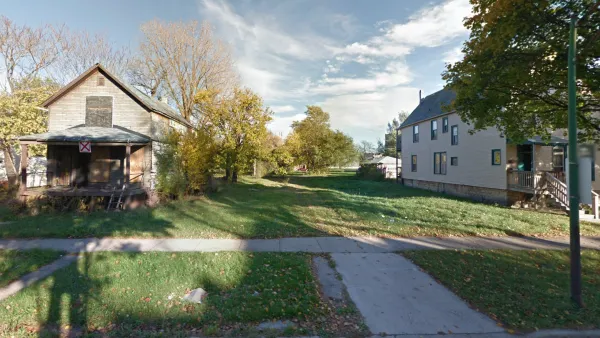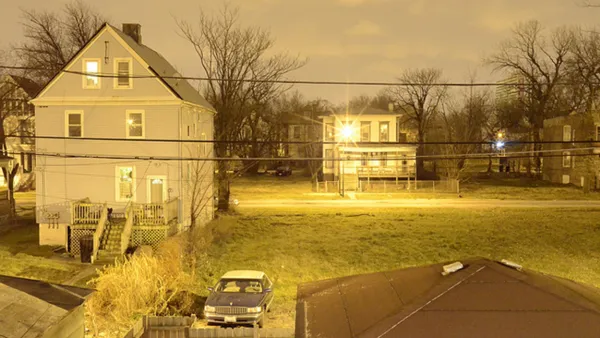There's a rationale for the demolition of vacant properties in cities like Chicago, but does that mean the city should be celebrating these programs? The planning of shrinking cities, it turns out, is still very much a work in progress.

An article by Chris Hagan tackles some of the troubling aspects of demolition programs in the city of Chicago.
First there's the question of whether the city's many demolition programs, resulting in the demolition of 3,100 buildings since 2008, are laying a foundation for neighborhood revitalization. In areas where private developers are pulling demolition permits, redevelopment often follows. The same potential for redevelopment isn't present when the city demolishes buildings, according to Hagan.
The article focuses on the varying goals and results of the city's approach to vacant lots and city-owned properties. Despite efforts to intervene with troubled buildings and properties (examples include the Large Lots Program, the Troubled Building Initiative, and a forfeiture program for vacant buildings) the city currently owns about 15,000 vacant lots, according to Hagan.
Thus, the question of how residents should feel about buildings being torn down in the neighborhoods. Pubic officials are ready to laud demolition programs as a win for public safety and redevelopment. The article opens with an anecdote about a press conference "kicking off the latest city initiative to tear down vacant buildings in high-crime police districts," which included a "group of Chicago city officials — including now-Chicago Police Superintendent Eddie Johnson" speaking into a "an official City of Chicago podium with microphones jutting out the top."
So should the city be celebrating when it tears down another building, or its 100th building, or any building—especially when it doesn't always have a plan for what comes next?
FULL STORY: Should Chicago Be Celebrating Demolitions?

Analysis: Cybertruck Fatality Rate Far Exceeds That of Ford Pinto
The Tesla Cybertruck was recalled seven times last year.

National Parks Layoffs Will Cause Communities to Lose Billions
Thousands of essential park workers were laid off this week, just before the busy spring break season.

Retro-silient?: America’s First “Eco-burb,” The Woodlands Turns 50
A master-planned community north of Houston offers lessons on green infrastructure and resilient design, but falls short of its founder’s lofty affordability and walkability goals.

Test News Post 1
This is a summary

Analysis: Cybertruck Fatality Rate Far Exceeds That of Ford Pinto
The Tesla Cybertruck was recalled seven times last year.

Test News Headline 46
Test for the image on the front page.
Urban Design for Planners 1: Software Tools
This six-course series explores essential urban design concepts using open source software and equips planners with the tools they need to participate fully in the urban design process.
Planning for Universal Design
Learn the tools for implementing Universal Design in planning regulations.
EMC Planning Group, Inc.
Planetizen
Planetizen
Mpact (formerly Rail~Volution)
Great Falls Development Authority, Inc.
HUDs Office of Policy Development and Research
NYU Wagner Graduate School of Public Service



























